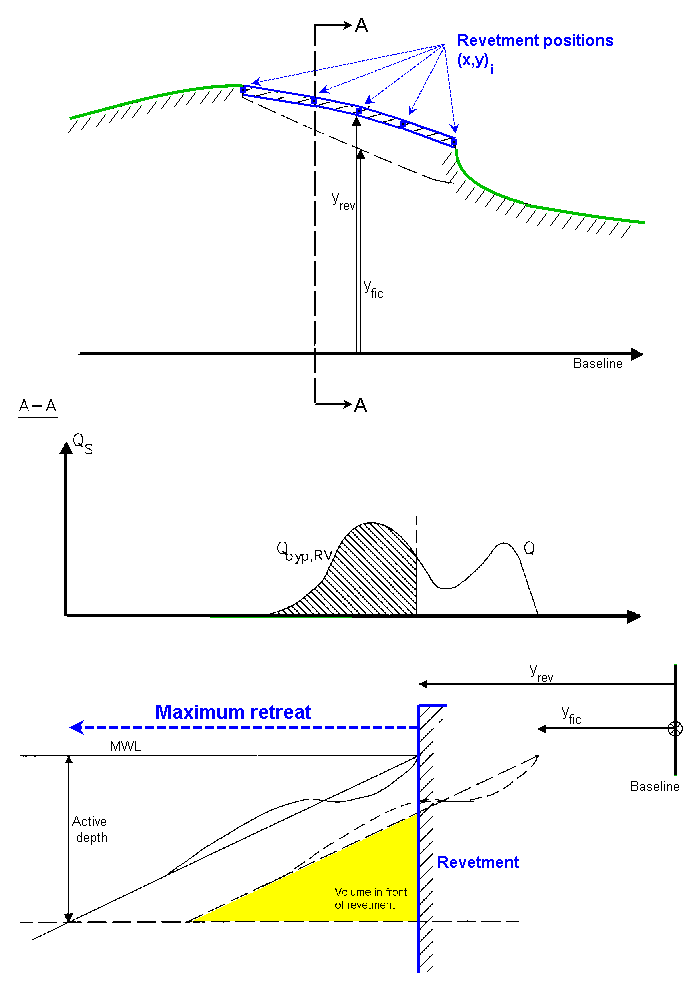
A revetment is defined as a structure on (or behind) the beach line, defined by the position of two (or several) points.
The revetment acts as a seawall by preventing the coastline from eroding and retreating along the extension of the revetment. Erosion may take place in front of the revetment, resulting in an increase of the water depth at the position of the revetment.
The maximum retreat is the maximum possible distance from the end of the revetment to the point on the coastline next to it, measured normal to the baseline. It essentially corresponds to the active width of the profile. The maximum retreat is also used in calculation of the depth and the sediment transport in front of the revetment.
When the coastline is retreating next to a revetment, the end of the revetment may shelter the waves coming from certain directions. This effect on the sediment transport rate may be included or omitted.
Revetments cannot be positioned next to a boundary point.

A too small value of the maximum retreat may lead to fluctuation in the depth in front of the revetment.

Figure 5.18 Definition of revetment